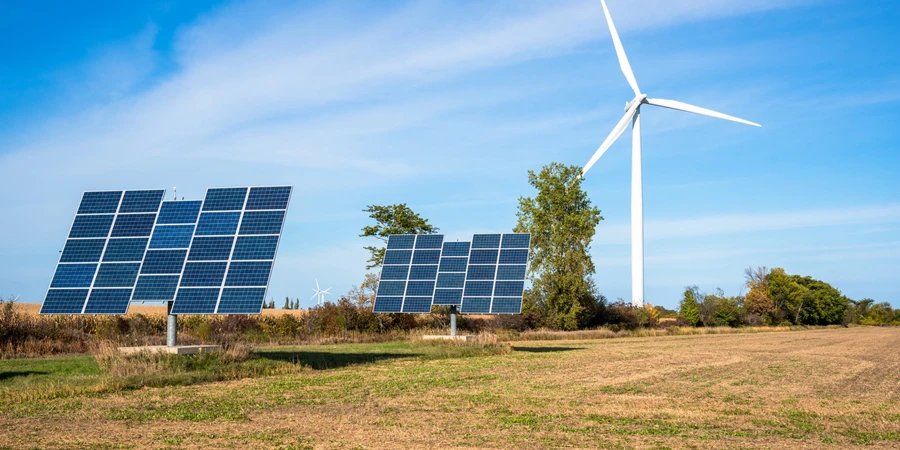- CanREA says Canada installed 2.3 GW of new wind, solar and energy storage capacity in 2023
- This 11.2% annual growth over the previous year was led by over 1.7 GW contributed by utility scale wind
- Utility scale solar pitched in with around 360 MW and on-site solar another 86 MW of the total last year
Canada had a ‘relatively good year’ of wind, solar and energy storage growth in 2023, including 446 MW of solar, but the need is to increase the pace of installations to meet net zero targets, says the Canadian Renewable Energy Association (CanREA).
The 11.2% annual growth for the 3 technologies last year was led by more than 1.7 GW of new utility scale wind. Utility scale PV added nearly 360 MW capacity, followed by 86 MW of new on-site solar, while 140 MW /190 MWh came from energy storage.
Altogether, the country expanded its total renewable energy capacity by 2.3 GW, taking the cumulative to exceed 21.9 GW at the end of 2023. Utility scale wind makes up the lion’s share with 16.98 GW, followed by 4.6 GW of solar, along with 1.2 GW of on-site solar and 356 MW/539 MWh of energy storage.
The 2023 additions are a significant improvement over 10.5% annual growth CanREA said the country’s wind, solar and energy storage sectors contributed to in 2022. It included more than 1.8 GW of wind and solar capacity additions (see 1.8 GW New Wind & Solar Capacity In Canada In 2022).
However, the association believes Canada needs to be deploy more than 5 GW of new wind and solar energy/year under its 2050 Vision to go net-zero.
“Canada has massive, untapped wind and solar resources that can be harnessed to provide the affordable, clean electricity needed in all jurisdictions. What is needed is more geographic diversity,” said CanREA’s President and CEO Vittoria Bellissimo. “We need to increase the pace of buildout, and we need to see deployment in all provinces and territories.”
REGIONAL GROWTH
Alberta led new installations in 2023, increasing these by 700 MW annually to 1.7 GW. It comprised both solar and wind, taking its aggregate to 5.8 GW of wind and solar, along with storage. In 2024, the association anticipates limited impact of the province’s pause on new approvals since it already has 1 GW capacity under construction.
Saskatchewan contributes 660 MW to the cumulative, led by wind energy. It aims to bring online 600 MW wind and solar in South Central by 2027, up to 1 GW in Southwest by 2030 and 1 GW wind and solar for 2030-2035.
Ontario is going slow with no new wind or solar development expected till 2025. It will expand in the future in line with its target to install up to 2 GW of new wind and solar by 2030-2031 and up to 3 GW of additional wind and solar by 2034, says the association.
With more than 4 GW of cumulative wind, solar and energy storage capacity in operation, Quebec needs to generate 150 TWh to 200 TWh by 2050. An additional 60 TWh is to come by 2035 from local utility Hydro-Quebec’s Action Plan.
Going by these and the renewable energy procurement plans announced by other provinces, CanREA expects the country to reach nearly 58 GW of wind, solar and energy storage capacity by 2035. Yet, it argues that this still falls short of national targets that it envisions under the CanREA’s 2050 Vision of reaching 96.78 GW.
Source from Taiyang News
Disclaimer: The information set forth above is provided by Taiyang News independently of Alibaba.com. Alibaba.com makes no representation and warranties as to the quality and reliability of the seller and products.




